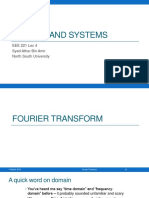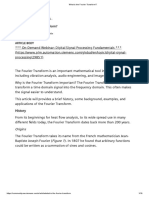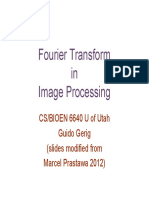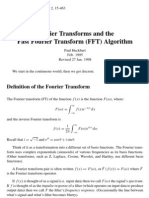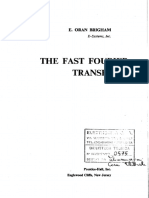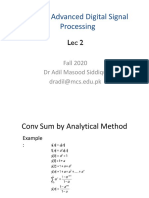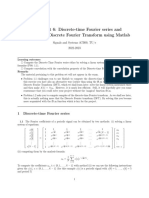0% found this document useful (0 votes)
67 views35 pagesFourier Transform in Signal Processing
Here are the Fourier transforms of those signals:
1) Impulse: 1
2) Step: 1/jω
3) Sin: π(δ(ω-1) - δ(ω+1))
4) Cos: π(δ(ω-1) + δ(ω+1))
5) Rect(x): sin(ωx/2)/(ωx/2)
6) Sinc(x): π if ω = 0, 0 otherwise
Uploaded by
mnaCopyright
© © All Rights Reserved
We take content rights seriously. If you suspect this is your content, claim it here.
Available Formats
Download as PPTX, PDF, TXT or read online on Scribd
0% found this document useful (0 votes)
67 views35 pagesFourier Transform in Signal Processing
Here are the Fourier transforms of those signals:
1) Impulse: 1
2) Step: 1/jω
3) Sin: π(δ(ω-1) - δ(ω+1))
4) Cos: π(δ(ω-1) + δ(ω+1))
5) Rect(x): sin(ωx/2)/(ωx/2)
6) Sinc(x): π if ω = 0, 0 otherwise
Uploaded by
mnaCopyright
© © All Rights Reserved
We take content rights seriously. If you suspect this is your content, claim it here.
Available Formats
Download as PPTX, PDF, TXT or read online on Scribd
/ 35


















